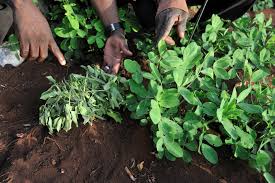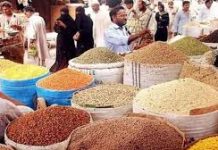World Desk
Marking World Soil Day, the Rome-based Food and Agriculture Organization ( FAO) has launched the most comprehensive global map showing the amount of carbon stocks in the soil.
Soil organic matter, with carbon as its main component, is crucial to soil health and fertility, water infiltration and retention as well as food production. As a major carbon storage system, conserving and restoring soils are essential for both sustainable agriculture and climate change mitigation.
The world’s soils act as the largest terrestrial carbon sink, reducing greenhouse gases in the atmosphere. Intensifying this role could significantly offset the rapid rise of carbon dioxide in the atmosphere.
The Global Soil Organic Carbon Map, illustrating the amount of soil organic carbon stock in the first 30 centimeters o f soil, reveals natural areas with high carbon storage that require its conservation, as well as those regions where there is the possibility for further sequestration.
This information can prove a powerful tool to guide decision-making on practices that aim to preserve and increase the current soil carbon stocks, helping win the fight against climate change.
“Soil is the foundation of agriculture, it is where food begins,” said FAO Deputy Director-General Maria Helena Semedo. “Maintaining the soil’s important functions and ecosystem services to support food production and increase resilience to a changing climate calls for sustainable soil management practices.”
The map shows that globally, the first 30 cm of soil contains around 680 billion tonnes of carbon – almost double the amount present in our atmosphere. This is a significant amount compared with the carbon stored in the whole vegetation (560 billion tonnes).
More than 60% of the 680 billion tonnes of carbon is found in ten countries (Russia, Canada, USA, China, Brazil, Indonesia, Australia, Argentine, Kazakhstan and Democratic Republic of Congo). This means that actions should be implemented towards protecting these natural carbon-rich soils to avoid emissions to the atmosphere.
The degradation of one third of the world’s soils has already prompted an enormous release of carbon into the atmosphere. Restoring these soils can remove up to 63 billion tonnes of carbon, significantly reducing the effects of climate change.
Soils with high organic carbon content are likely to be more productive, better able to purify water and provide plants with optimal moisture conditions. The water stored in soil serves as the source for 90 per cent of the world’s agricultural production and represents about 65 per cent of fresh water.
Increasing soil organic carbon by improved management can help maintain productivity in drier conditions. Therefore, actions should be taken to foster further sequestration where the conditions are suitable for that purpose. Innovative good practices such as the use of deep rooting species should be promoted.
“Maintaining – but especially increasing – soil carbon stocks should become an obligation as this will allow us to unlock the soil’s full potential to support mitigation and adaptation actions in a changing climate,” Semedo said.
This first-ever soil organic carbon map developed through an inclusive and country-driven process was supported by FAO’s Intergovernmental Technical Panel on Soils. Ultimately, more than 100 member countries shared their national carbon maps which FAO put together into a global map – it is a concrete contribution towards Sustainable Development Goal 15 – Life on Earth. The next step is for countries to move into monitoring soil organic carbon levels using their national soil information systems to make evidence-based decisions on how to manage their soils and monitor the impact of those actions.















